This pan is a piece of luxury cookware.

- Type: Silver-lined trout pan in hammered finish with silver lifter, with brass handles fastened with three copper rivets; domed lid with brass handle fastened with one rivet on each bracket
- French description: Truitière doublé d’argent et martelé avec plate-forme en argent et poignées en laiton munies de trois rivets en cuivre; couvercle bombé avec poignée en laiton munie d’un rivet sur chaque côté
- Dimensions: 30cm long by 13cm wide by 9.5cm tall (11.8 inches by 5.1 inches by 3.7 inches)
- Thickness: 1.2mm
- Weight: 1298g (2.7 lbs) without lid; 1824g (4 lbs) with lid; lifter adds 708g (1.6 lbs)
- Stampings: J. GAILLARD PARIS
- Maker and age estimate: Gaillard; 1940s-1960s
- Source: FrenchAntiquity (Etsy)
French cuisine has the charming habit of naming cooking tools for their specific purpose, and this pan is termed a truitière, for the trout-sized fish that it is designed to poach. Functionally it is no different from its larger sibling the poissonière (or saumonière, for salmon): it is long and slender, with a lifter platform to lower fish into the poaching broth and lift it out when it’s done.

This truitière is complete with its original lifter. It is beautifully designed: the arms are hinged and can be lowered flat to the sides, and small hooks close to the base can suspended the platform over the pan at a convenient height to add or remove food. The platform is quite sturdy and rigid but the handles are thinner and one has bent slightly out of shape. I would try to bend it back into shape but I’m reluctant to risk stressing the metal, and the curvature is subtle and doesn’t interfere with the handle’s function.
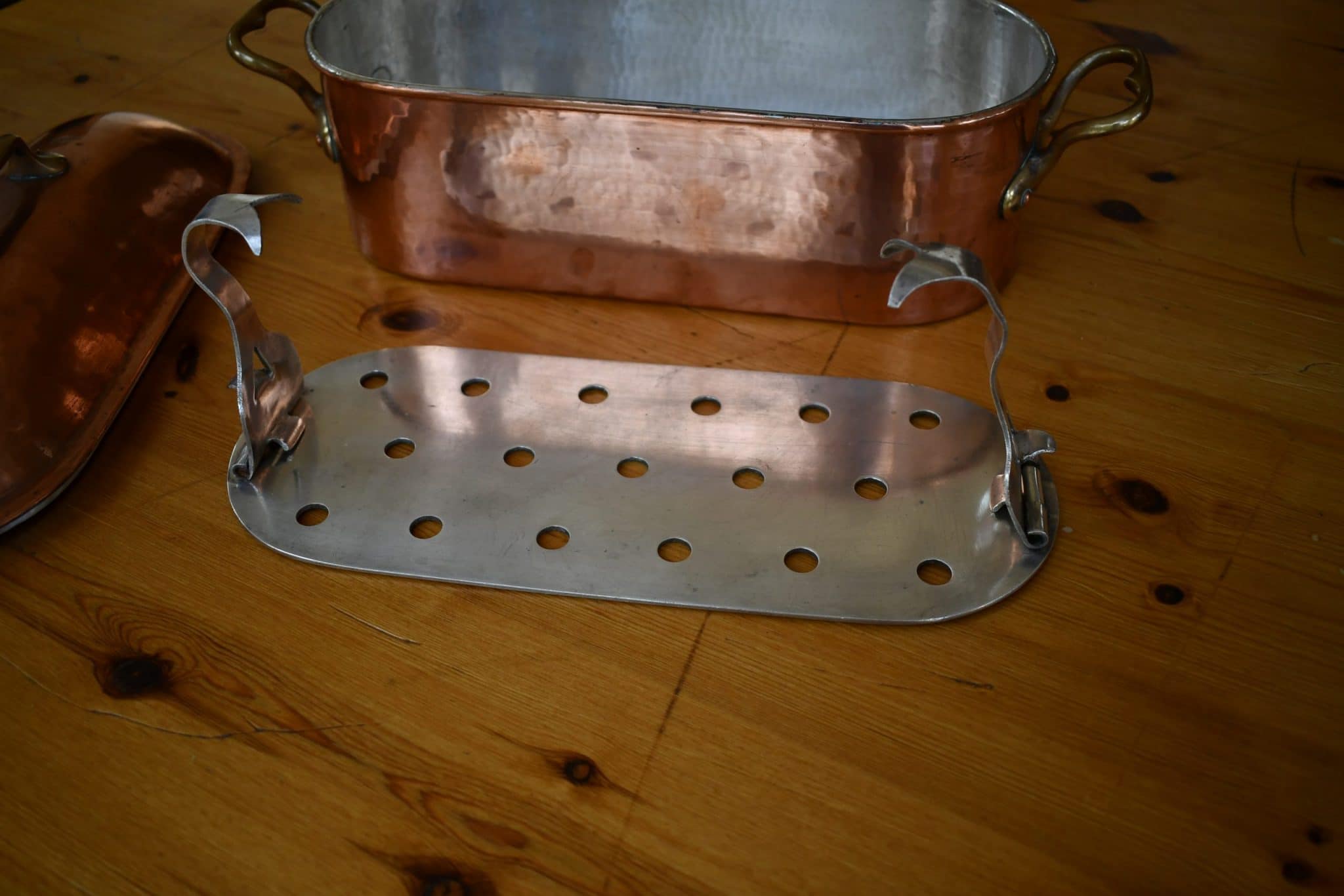

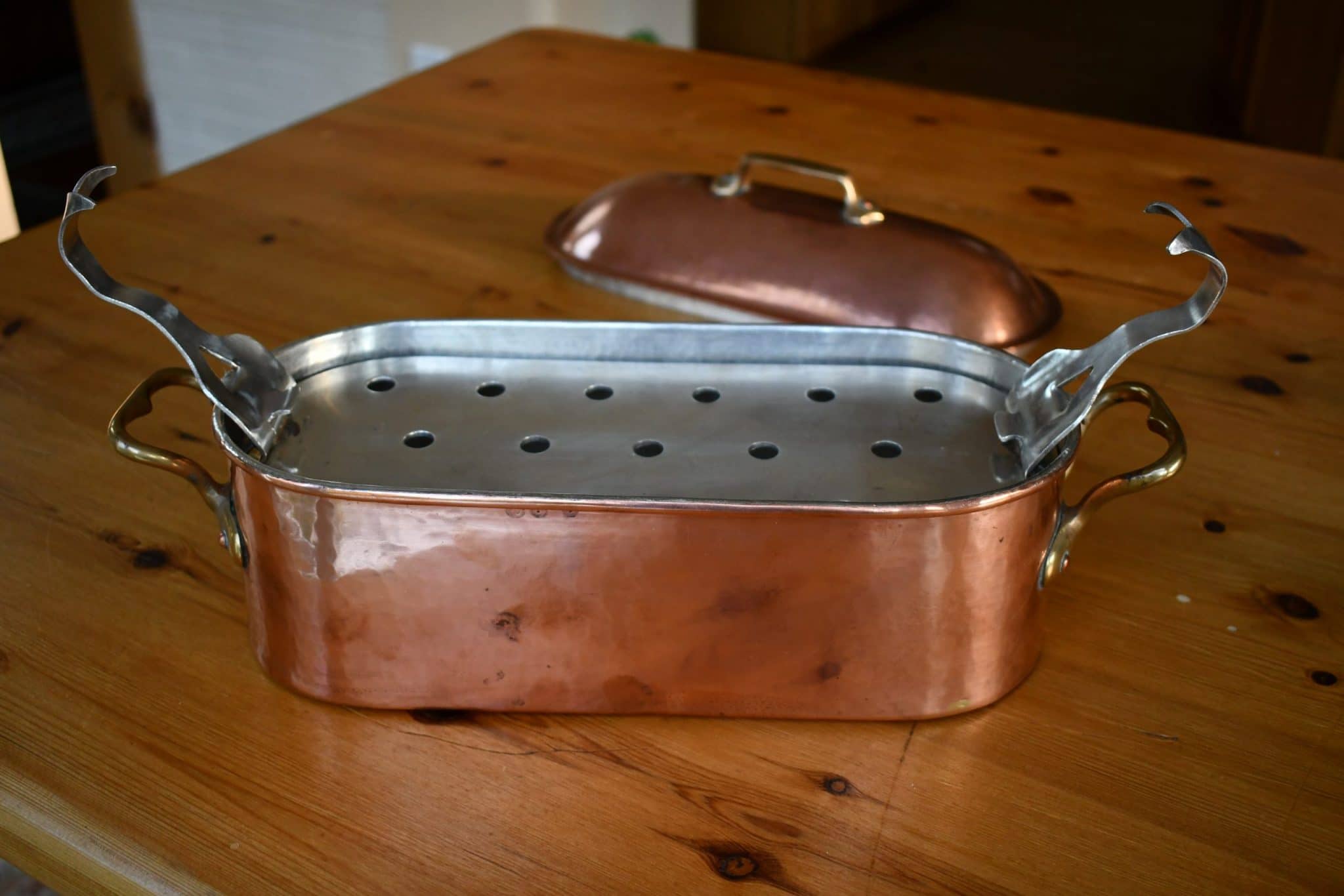

The pan body is 1.2mm thick, a standard thickness for fish poachers like this, and has a rolled rim to add rigidity.

It is dovetailed: brazed seams run around the edge of the base and up both ends of the pan under the handles. I consider this a sign of 19th century construction; towards the end of the 19th century, brazing was replaced with welding, which produces imperceptible seams that are much stronger. But for a period of time welding machines were large and unwieldy, and it seems possible to me that this pan could have been made in the very early 20th century, if brazing was still in use for small or unusually shaped pieces.
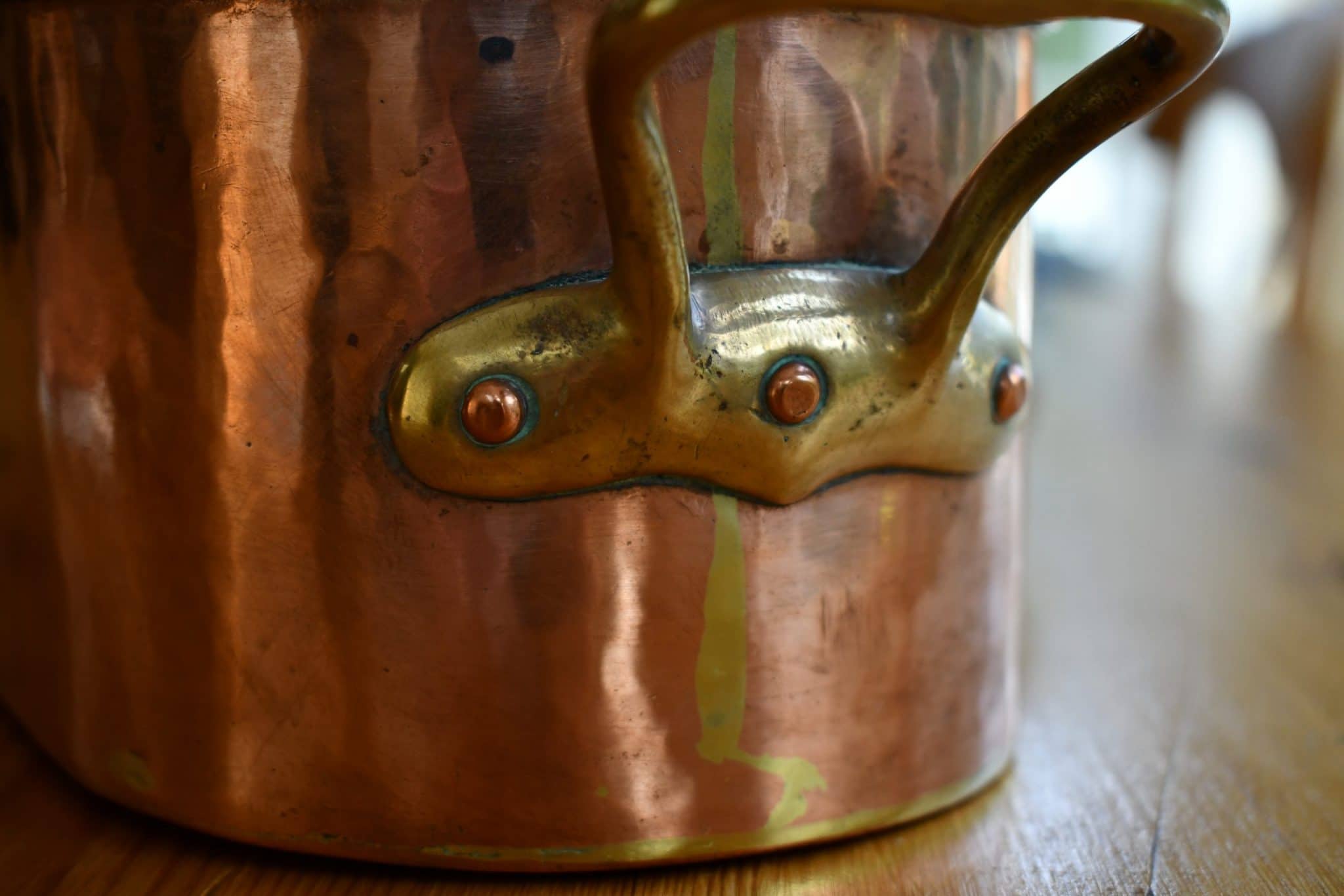

The pan is stamped on the lid and on one end with “J. Gaillard Paris” in a simple oval cartouche. My study of Gaillard stamps is ongoing, but at this moment I believe the J. stands for Jules Gaillard. He ran the company from 1885 to the 1930s.


The brass handles are lovely. The baseplate’s soft lower point is echoed in the handgrips and on the brackets on the lid handles.
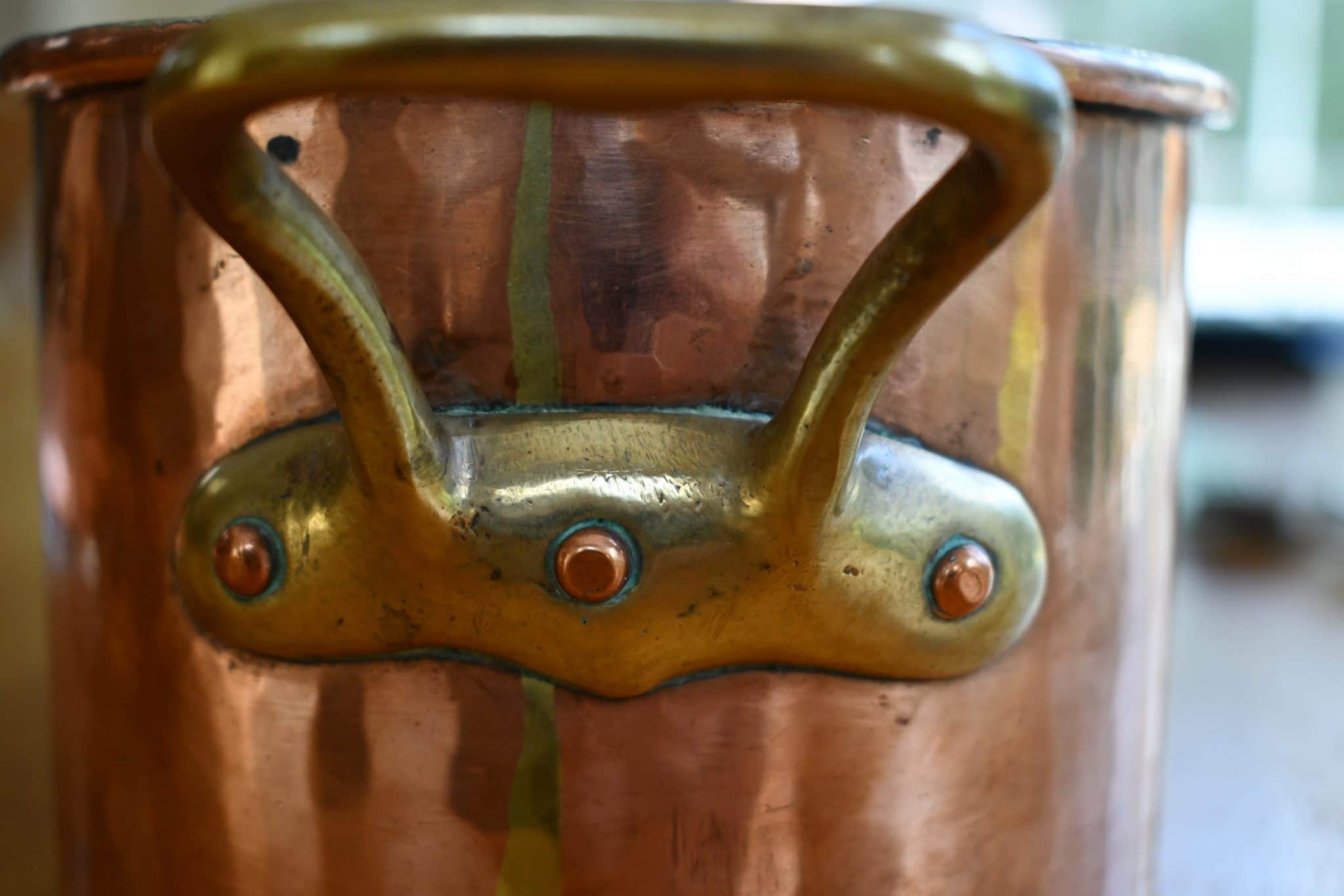
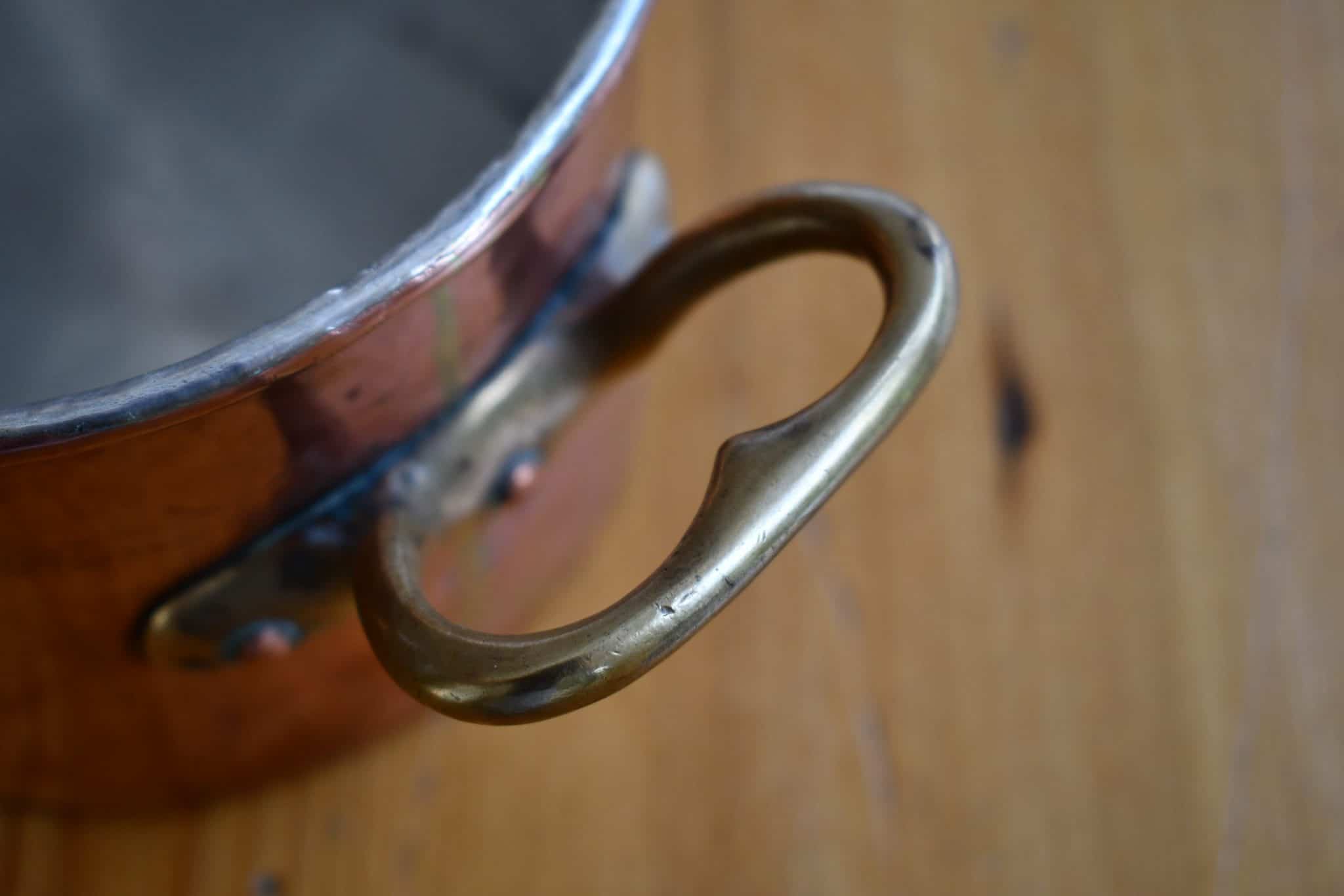

The interior rivets are flat and flush, as they would need to be in order for the lifting platform to slide easily up and down. The base is absolutely flat — this pan has been well kept over its history, and comes to me in very fine vintage condition.

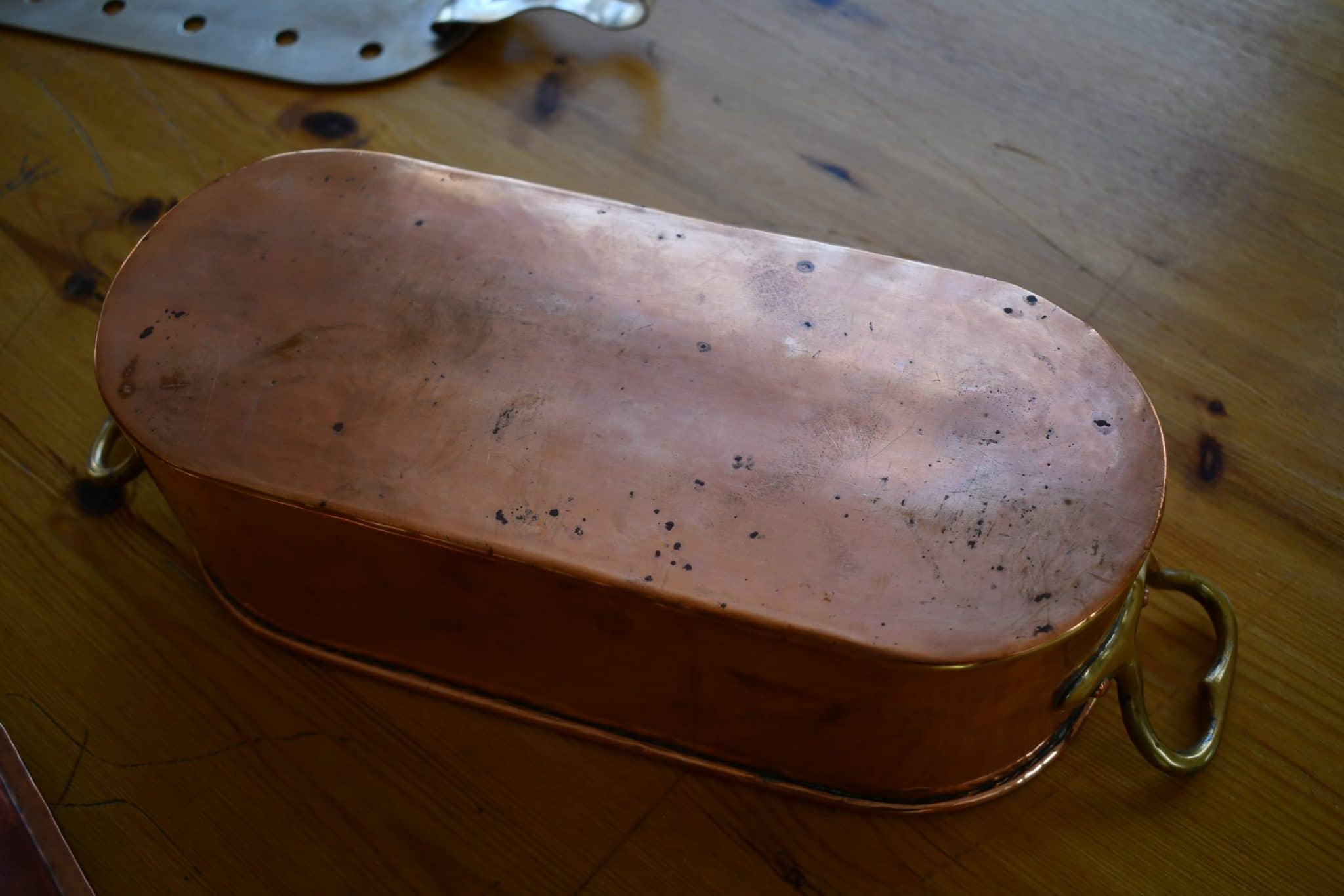
This is just a lovely little pan. These are not hard to find on the vintage copper market and Mauviel still makes a similar style today, albeit at a slightly larger 40cm length, with the same bread-loaf shape. It is part of Gaillard’s Orfèvrerie de table series, a line of silver-plated copper as shown in this page from the 1956 catalog. (I think this pan is earlier than 1956, though, as the styling and stamp are slightly different.)
Silver is a marvelous material for cookware. It is slightly more conductive than copper while being much less reactive, so it’s a more universally food-safe cooking surface than is copper. Soy Turkiyë makes solid silver cookware and pure silver pieces occasionally come up on eBay and Etsy, but of course they are quite expensive. If you can’t afford a solid silver piece, the next best thing is a copper pan lined with silver (though in this role the silver is merely serving as the least intrusive barrier possible between the copper and your food, and does not confer additional thermal benefits). Silver’s major advantage over tin as a lining is its high melting point. While tin begins to melt at 450°F (232°C), silver melts at 1763°F (962°C), so it can handle high heat cooking tasks.
But a silver lining is not bulletproof. It is electroplated onto the copper, creating a thin even layer about 15-50 microns thick (0.015-0.05 millimeters). Silver is harder than tin but it can still be scratched and scrubbed through — if you are fortunate enough to have a silver-lined pan, treat it with the same respect you afford your tin and you’ll be fine. But if the day comes when the silver lining wears away to reveal copper, you will need to find a specialty metalworker to re-electroplate it for you. (This is not insurmountable, and I suspect a retinner would know where to send you.)

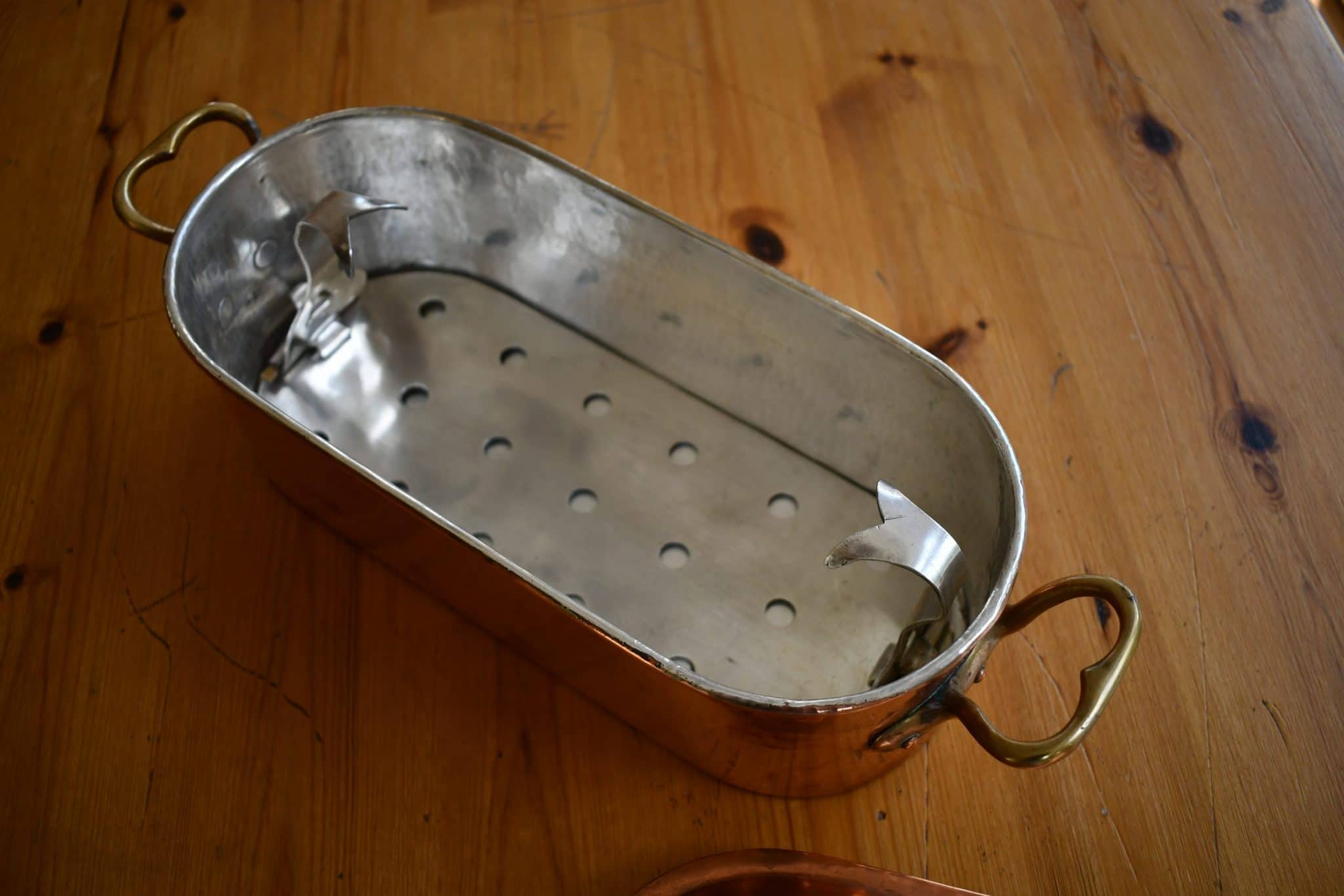
But in my opinion, silver is unnecessary for a fish poacher like this. Poaching is water-based cooking: you fill the pan with a few inches of broth, heat it to a simmer, and dip fish into it until cooked. The broth can’t ever exceed 212°F (100°C), which means as long as there is liquid in the pan, the copper can’t exceed those temperatures either. There is no need for silver’s high-heat tolerance — it’s not like you’d be flash-searing meat in it before the poach.

(And really, if we get down to it, what the pot or pan is made of doesn’t matter either. Any pot filled with water will behave pretty much the same way: the water absorbs heat and the convective currents in the water circulate it. If you keep adding heat to the pan, the water absorbs it and releases it as steam — but never exceeds boiling temperature. Sure, a copper stockpot might heat water a few seconds faster than a stainless steel stockpot, but really, once the water’s at temperature it doesn’t matter what the pot walls are made of or how thick they are.)
This is a beautiful piece if handwork. Look at this lifter.

I believe this is made from solid silver. I tested the base piece with silver dip and it immediately removed tarnish, which rules out tin and stainless steel; furthermore, there are no swirls or drips as there would be if it had been hand-tinned, and the edge surfaces look crisp and not electroplated.
The handles for the lifter appear to me to be hand-made. The cuts for the handle pieces are beautifully and evenly made but not perfectly symmetrical — neither cast nor punched by machine. The metal flanges for the hinges look hand-curled. There is a wooden dowel inserted as the pin of the hinge, and I suspect it could be original to the piece.
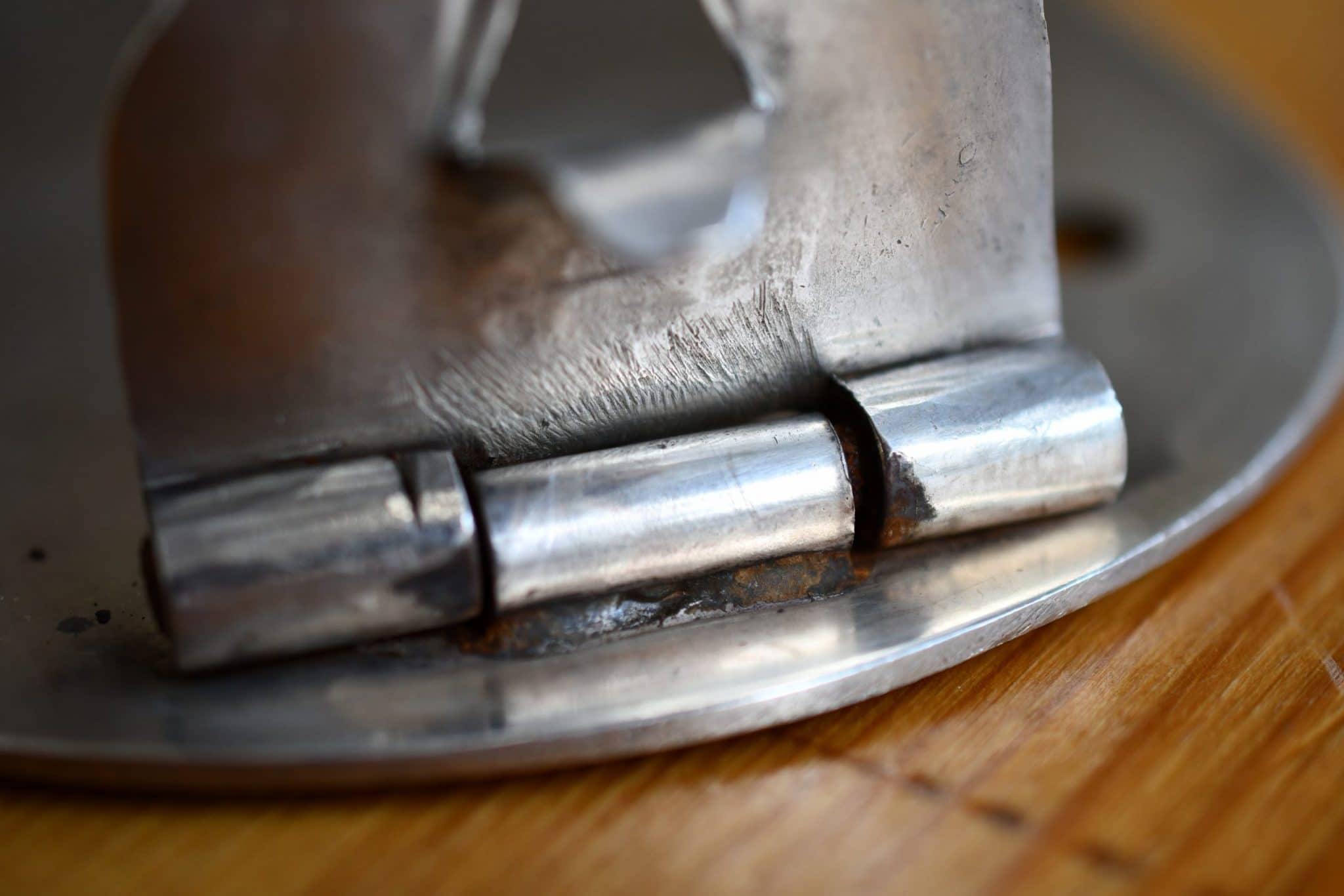



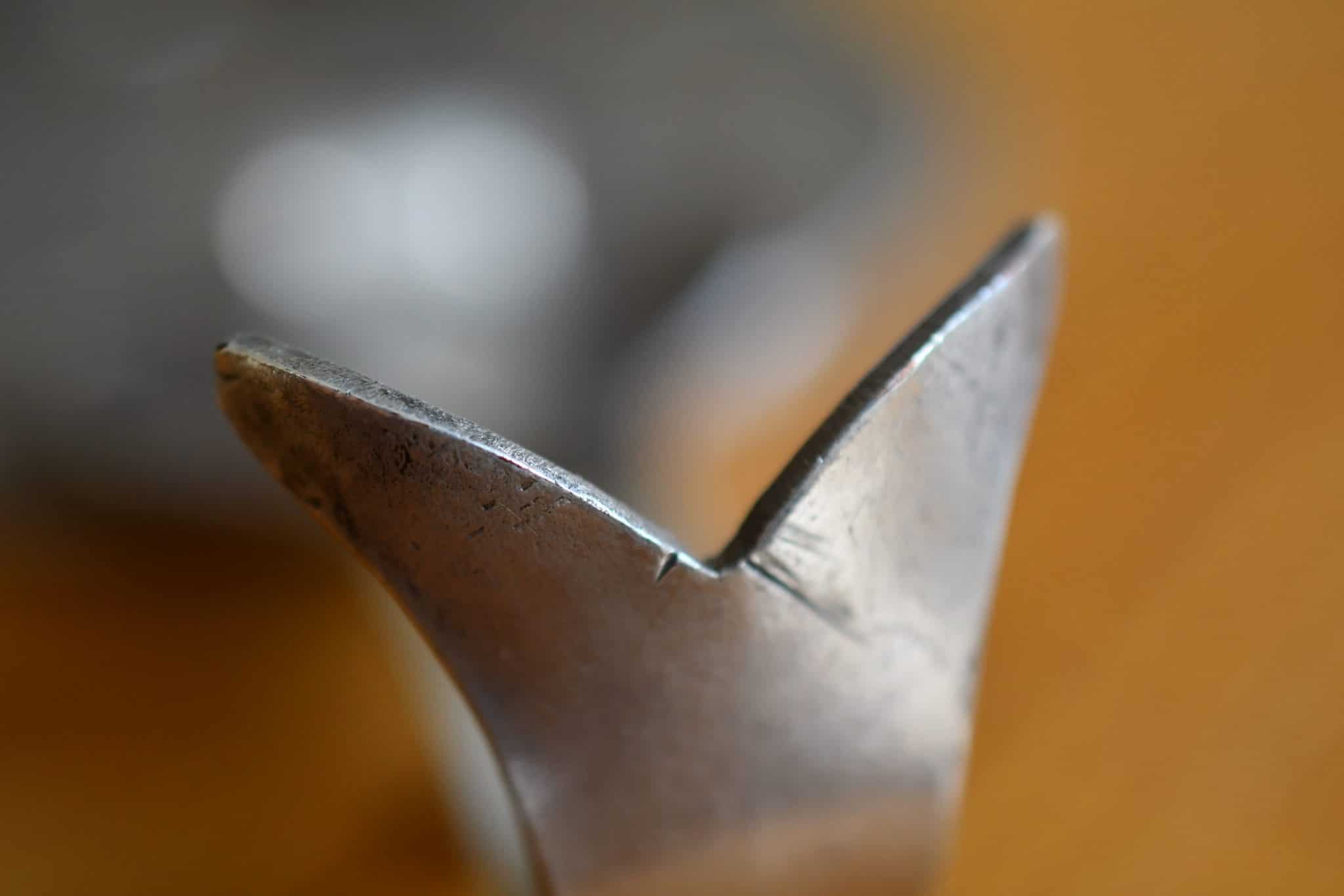



This is a beautiful piece of handmade copper from Jules Gaillard, perhaps my favorite maker of antique French copper. And I am honored to have it now.

Corrections
I initially thought this silver-plated piece was some kind of special order, but I stand corrected. William and Fidelma Cox of Normandy Kitchen Copper were kind enough to share their 1956 Gaillard catalog showing the orfèvrerie line of silver-plated copper, which tells me that this was a routine offering. I’ve amended this post with this information.






What a lovely little piece of history and beauty. It looks both delicate and fancy!
A simply beautiful piece of Gaillard artistry!